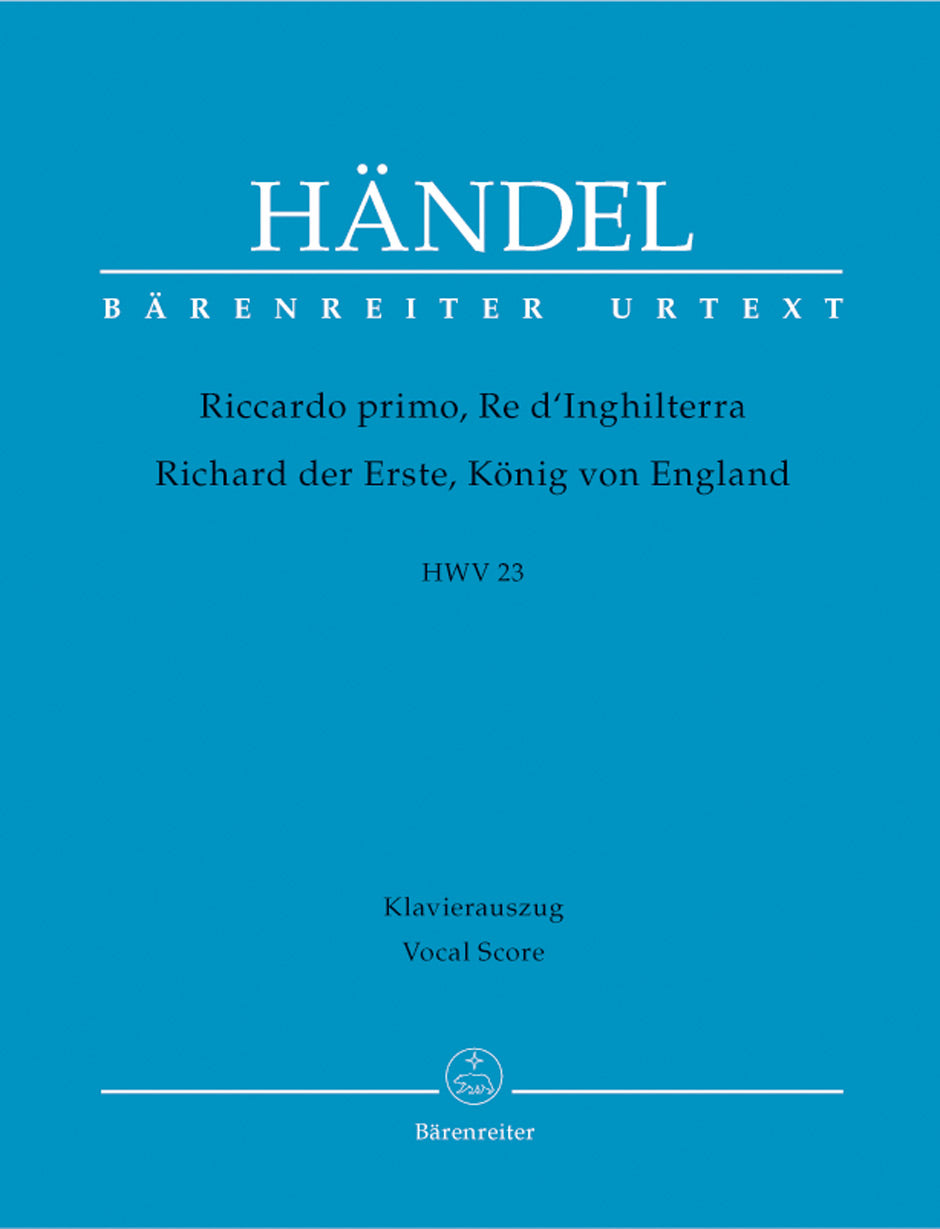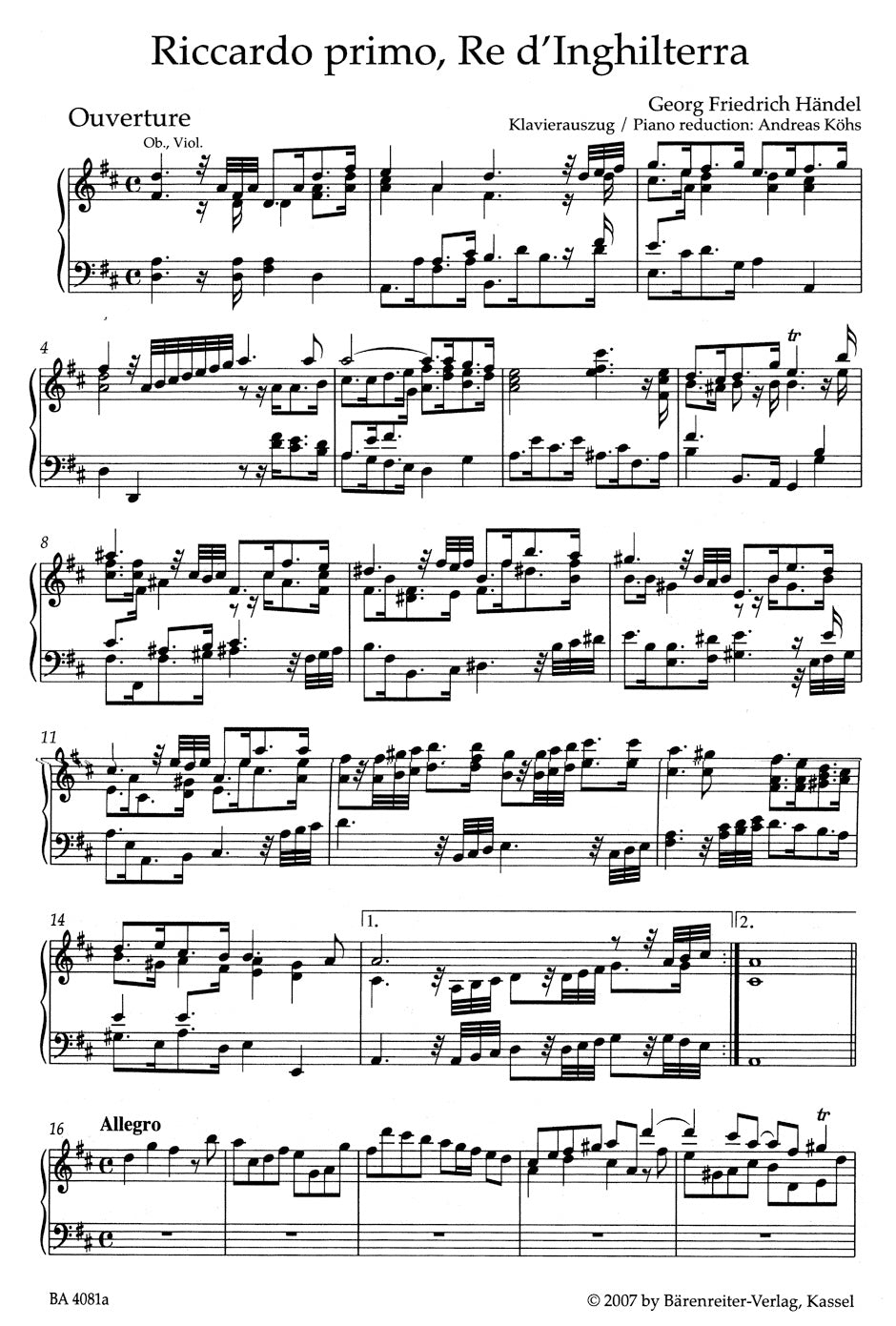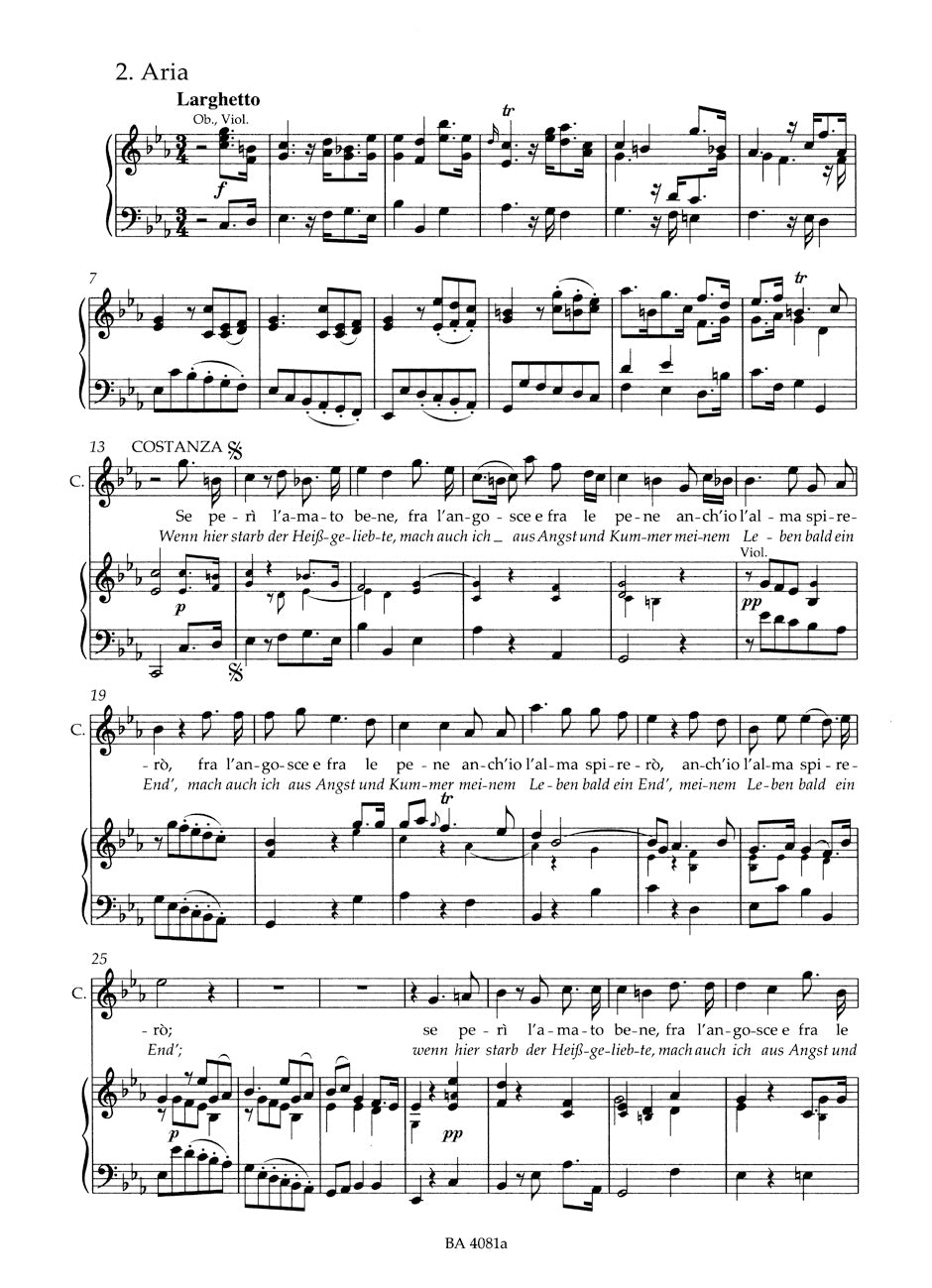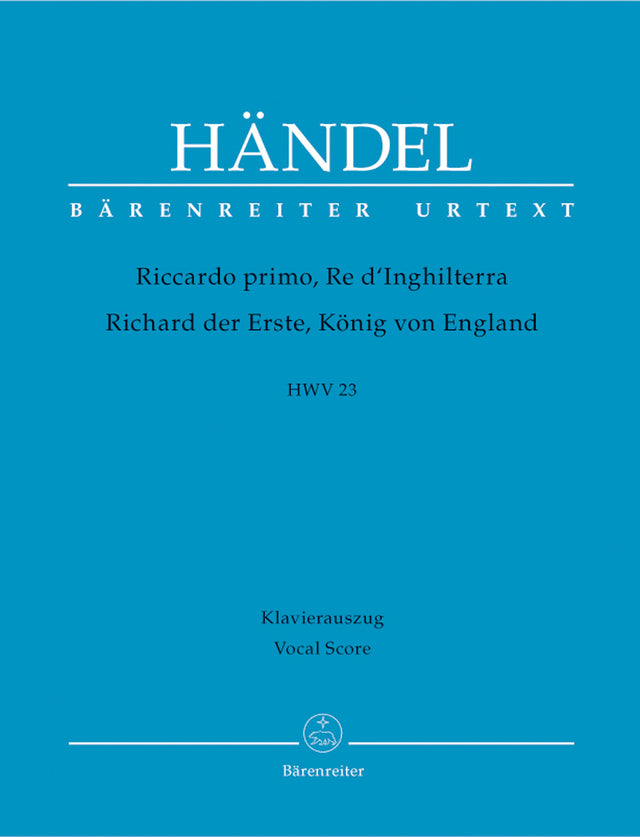Handel: Riccardo primo, Re d'Inghilterra, HWV 23
In stock and typically ships within 1 business day.
- Composer: George Frideric Handel (1685-1759)
- Format: Vocal Score
- Instrumentation (this edition): Piano Reduction, Voice
- Originally for: Opera
- Work: Riccardo primo, Re d'Inghilterra, HWV 23
- Work Languages: German, Italian
- ISMN:
- Size: 7.5 x 10.6 inches
- Pages: 245
- Urtext / Critical Edition
Description
In his libretto for " Riccardo primo", Paolo Rolli drew on Antonio Lotti's opera " Isacio tiranno " which had been performed in Venice in 1710. Handel needed a text with two great women's roles, for the two best female singers of the day were members of his troupe – Francesca Cuzzoni and Faustina Bordoni . He had already written the operas "Alessandro" and " Admeto " for them. He began composing " Riccardo " in spring 1727, completing the first version on 16 May.
However, following the death of King George I on 11 June 1727, the theatres remained closed. for Handel, who had become a British citizen in February 1727, the accession of George II to the throne offered new possibilities, and he embarked on a revision of the opera. with this, he was able to offer a new opera for the coronation festivities, the hero of which was one of King George's charismatic forebears.
From May onwards, Handel thoroughly revised the present score, wrote some parts anew and expanded it with particularly splendid music. Handel and Rolli also improved the plot and introduced patriotic elements to honour the British monarchy. The historic background is the third crusade against Saladin, the Sultan of Egypt and Syria , who had recaptured Jerusalem in 1187. Although King Richard I captured Cyprus and together with French crusaders stormed the fortress of Akko in the Holy Land, the crusade ended with a ceasefire and Jerusalem remained in Saladin's hands. Richard was given the title ‘Coeur-de-lion‹' by the English for his great military ability and bravery, although the Sicilians had first given him this name because of his relentless cruelty in clashes around Messina.
Publishers use a lot of words to describe what they sell, and we know it can be confusing. We've tried to be as clear as possible to make sure you get exactly what you are looking for. Below are descriptions of the terms that we use to describe the various formats that music often comes in.
Choral Score
A score for vocalists that only contains the vocal lines. The instrumental parts are not there for reference. Generally, cheaper than a vocal score and requires multiple copies for purchase.
Facsimile
Reproductions of the original hand-written scores from the composer.
Full Score
For ensemble music, this indicates that the edition contains all parts on a single system (there are not separate parts for each player). In larger ensembles, this is for the conductor.
Hardcover
Hardbound. Generally either linen-covered or half-leather.
Orchestral Parts
Similar to a wind set, this is a collection of parts. In the case of strings, the numbers listed are the number of copies included, though generally these are available individually (often with minimum quantities required).
Paperback
When publishers offer multiple bindings (e.g. hardcover) or study scores, this is the "standard" version. If you're planning to play the music, this is probably what you want.
Performance / Playing Score
A score of the music containing all parts on one system, intended for players to share. There are not separate parts for each player.
Set of Parts
For ensemble music, this indicates that there are separate individual parts for each player.
Solo Part with Piano Reduction
For solo pieces with orchestra, this is a version that contains a piano reduction of the orchestra parts. For piano pieces, two copies are typically needed for performance.
Study Score
A small (think choral size) copy of the complete score meant for studying, and not playing. They make great add-ons when learning concertos and small chamber works.
Vocal Score
A score prepared for vocalists that includes the piano/organ part or a reduction of the instrumental parts.
Wind Set
For orchestral music, this is a collection of wind and percussion parts. The specific quantities of each instrument are notated.
With Audio
In addition to the printed music, the edition contains recordings of the pieces. This may be an included CD, or access to files on the internet.
With / Without Fingering (Markings)
Some publishers prepare two copies - a pure Urtext edition that includes no fingering (or bowing) suggestions and a lightly edited version that includes a minimal number of editorial markings.





